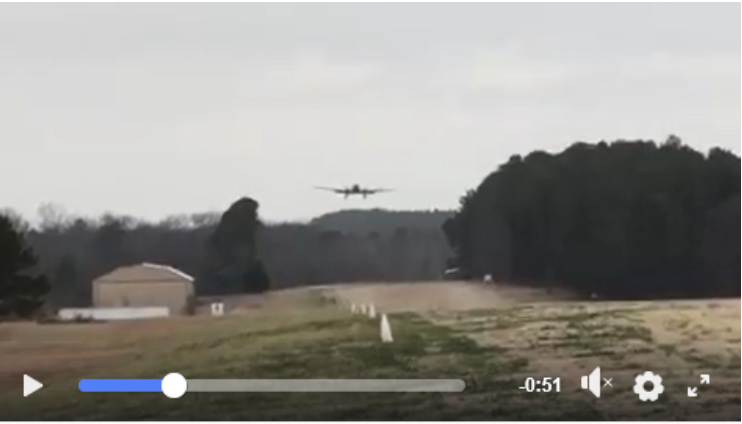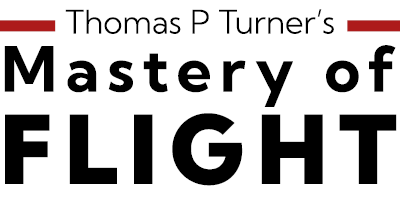FLYING LESSONS uses recent mishap reports to consider what might have contributed to accidents, so you can make better decisions if you face similar circumstances. In most cases design characteristics of a specific airplane have little direct bearing on the possible causes of aircraft accidents—but knowing how your airplane’s systems respond can make the difference in your success as the scenario unfolds. So apply these FLYING LESSONS to the specific airplane you fly. Verify all technical information before applying it to your aircraft or operation, with manufacturers’ data and recommendations taking precedence. You are pilot in command and are ultimately responsible for the decisions you make.
FLYING LESSONS is an independent product of MASTERY FLIGHT TRAINING, INC.
Pursue Mastery of Flight™
This week’s LESSONS:
Most FLYING LESSONS are drawn from accident reports. The facts surrounding accidents are almost always capable of teaching us something, even when the reports are preliminary; accidents are by their nature far better documented than non-accident flights. Every now and then, though, it’s nice to find documentation of a flight well done. Take for instance this LESSON, for which (because I’ve been too swamped at work lately) I go back six years into the Mastery of Flight record.
This video was posted on FaceBook public group, a vintage DC-3 (is there any other kind?) landing at Alexander Memorial Airport just south of Atlanta, Georgia. The author of the post wrote:
Flew the DC3 into Alexander Memorial (GA2) yesterday for Breakfast at Barnstormers Grill! 95 foot wingspan, 130 feet between the trees. 2400 foot grass with upslope. Over the fence at 80 knots, left flaps down and forced tail down early for extra drag, no brakes and taxi speed after about 1600 feet. Cost a lot more than $100 hamburger. But sure was fun!
The author added:
A keen eye may have noticed something interesting. The center of the tree opening is not lined up with the center of the runway. Just before touchdown I moved a little to the left to be on the center of the runway.

I “shared” the post, adding my comment: Precision flying in an amazingly capable large aircraft. So often the genesis of my writing is an airplane accident. This week I want to write about LESSONS from not crashing an airplane.
I’ve never flown a DC-3 (I’m still hoping to be able to afford a DC-3 type rating some day). I expect, however, that the available landing performance data describes the airspeed for a maximum-performance landing based on airplane weight, and that as flown it is very close to the 80 knots the pilot described at the airplane’s weight at the time. Control effectiveness is likely on the edge of crispness there—by that I mean the “flippers” (as they called them when the DC-3 was new) are still effective, but it takes a lot of control deflection to make things happen. An overly exuberant pilot might tend to overcontrol.
There may be a preferred method for obtaining short-field stopping in this airplane. I’ve heard of pilots pushing the nose down to raise the tail, resulting in a neutral to negative angle of attack to reduce lift while increasing aerodynamic drag from the raised tail and putting more weight on the wheels for friction and braking. The pilot who posted this experience did the opposite, forcing the tail down for tailwheel drag. Something it took me a long time to learn as an instructor is there is almost never one correct way to fly an airplane. Airplanes of this vintage usually do not have a documented procedure for maximum braking, leaving technique to the experience of the pilots who fly the type. Those experiences are passed down from one pilot to the next, and more than one technique may do the job.
To successfully make this kind of landing the pilot must be extremely alert and active on the controls, while flying the correct airspeed in the correct airplane configuration (flaps and landing gear) and power setting, precisely on glidepath and in precise alignment with the final approach path (between the trees) and then transitioning to precise alignment with the runway for touchdown. It’s not likely something he did without a lot of forethought (or review, if he’s flown the DC-3 there before). It’s probably not something he approach by saying: “I think I can get through that tiny gap in the trees, then line up and touch down with plenty of room to get stopped. At least I hope I can. Let’s give it a shot.”
Coincidentally I was on the same airport the next day. The DC-3 was not on the ramp, so presumably the takeoff went equally as masterfully (there was no wreckage to be seen, and no accident report, so observational science is probably satisfied). It would have been a downhill, short field, maximum performance takeoff with a turn to align with the gap in the trees on the way out. A fairly strong northwesterly wind later in the day would have helped. Regardless, a successful takeoff would have required performance planning, allowance for environmental conditions, a practiced technique to obtain desired performance, and precise execution of that technique.
So often the inspiration of our discussions is an event when the pilot probably did not make a specific performance and maneuvering plan for attempting a maximum performance or unusual- for-that-pilot maneuver. I expect the DC-3 pilot studied the manuals in great detail, practiced obtaining the necessary performance on much longer runways with fewer obstructions to develop the precision necessary, then studied the airport and the environmental conditions, picking the day and time of day that gave him the margins he needed to make the landing and takeoff safely. As I’ve written many times before:
Safety is not a strategy. Safety is the outcome of demonstrating mastery and command of the airplane.
It’s clear to me that the DC-3 pilot, at that time on that day, demonstrated mastery of the aircraft, and the successful outcome of the maneuver was never seriously in doubt. That quote comes from now-superseded editions of the old FAA Practical Test Standards. It was the pilot examiner’s “prime directive,” the ultimate means by which he or she would determine whether a pilot applicant passed a checkride.
“Never seriously in doubt” does not mean there is a chance the pilot might fly in an unsafe manner. It means the pilot may be attempting, for example, a short-field landing, and if it appears he/she will not fly the maneuver to standards he/she will execute an equally masterful go-around. The decision and ability to wave him/herself off, fly a precise go-around, set up and complete the landing to standard in a subsequent attempt is itself a demonstration of mastery and command of the situation. By contrast, wildly maneuvering the airplane on short final but still managing to touch down in the designated landing zone may meet the completion criteria, but it is not a demonstration of mastery of the entire maneuver.
Sadly, that simple criterion disappeared from the PTS and has not resurfaced in the current Airman Certification Standards (ACS). The word “mastery” does appear a few times in passing in the ACS introductory notes, but never in this over-arcing, all- encompassing way. Instead, it includes this less-inspiring, and less demanding, statement to describe the flight test portion of a Practical Test:
The flight portion of the practical test requires the applicant to demonstrate knowledge, risk management, flight proficiency, and operational skill in accordance with the ACS.
Still, the original PTS phrase inspired me to name my company Mastery Flight Training 30 years ago. And it’s the philosophy I apply to the flying, and teaching, I do: to demonstrate mastery of the aircraft, with the successful outcome of each maneuver never seriously in doubt.
History is full of pilots who demonstrate the amazing capability of airplanes when flown correctly. Bob Hoover reportedly did this with P-38 Lightnings in North Africa. He demonstrated aerobatics with one engine shut down to calm and educate pilots transitioning to twin-engine airplanes “in the field” as the new fighter caught up with pilots who had not been trained on twins. This experience was the genesis of Hoover’s air show career. Jimmy Doolittle, fresh back in the States after his infamous raid on Tokyo, did similar demonstrations in the Martin B-26 Marauder to address pilot concerns that the airplane was an unmanageable death trap. The B-26 went on to earn the highest safety record of any major U.S. combat type in the war.
Hoover and Doolittle, and Jim Sells, the pilot of the YouTube DC-3, encourage us to strive for the same level of precision. We don’t take unexamined or unnecessary risks. We figure out what the airplane will do, and what we must do to make it perform. Then we work to attain that level of precision, and practice to maintain and fine-tune those skills every time we fly.
I want to be like Bob and Jimmy and Jim. Don’t you?
Questions? Comments? Supportable opinions? Let us know at [email protected].


Share safer skies. Forward FLYING LESSONS to a friend
Please help cover the ongoing costs of providing FLYING LESSONS through this secure PayPal donations link. Or send a check made out to Mastery Flight Training, Inc. at 247 Tiffany Street, Rose Hill, Kansas USA 67133. Thank you, generous supporters.
Thank you to our regular monthly financial contributors:
Steven Bernstein, Montclair, NJ. Robert Carhart, Jr., Odentown, MD. Randy Carmichael, Kissimmee, FL. Greg Cohen, Gaithersburg, MD. John Collins, Martinsburg, WV. Paul Damiano, Port Orange, FL. Dan Drew. Rob Finfrock, Rio Rancho, NM. Norman Gallagher. Bill Griffith, Indianapolis, IN. Steven Hefner, Corinth, MS; Ellen Herr, Ft Myers, FL. Erik Hoel, Redlands, CA. Ron Horton. Robert Hoffman, Sanders, KY. David Karalunas, Anchorage, AK. Steve Kelly, Appleton, WI. Karl Kleiderer. Greg Long, Johnston, IA. Rick Lugash, Los Angeles, CA. Richard McCraw, Hinesburg, VT. David Ovad, Resiertown, MD. Steven Oxholm, Portsmouth, NH. Brian Schiff, Keller, TX. Paul Sergeant, Allen, TX. Ed Stack, Prospect Heights, IL; Paul Uhlig, Wichita, KS. Richard Whitney, Warrenton, VA. Jim Preston, Alexandria, VA. Johannes Ascherl, Munich, Germany. Bruce Dickerson, Asheville, NC. Edmund Braly, Norman, OK. Steven Hefner. Bruce Douglass, Conway, MA. Lorne Sheren, New Vernon, NJ
And thanks to these donors in 2024:
Jim Lara, Joseph Stadelmann, Dixon Smith, Barry Warner, Wayne Mudge, Joseph Vandenbosch, Ian Campbell, Jay Apt, John Kimmons, Derek Rowan, Michael Maya Charles, Ron Horton, Lauren McGavran, Gerald Magnoni, Amy Haig, Rod Partlo, Brent Chidsey, Mard Sasaki-Scanlon, SABRIS Aviation (Dave Dewhirst), Edmund Braly, Joseph Orlando, Charles Lloyd, Michael Morrow, Abigail Dang, Thomas Jaszewski Danny Kao, Gary Garavaglia, Brian Larky, Glenn Yeldezian, David Yost, Charles Waldrop, Robert Lough. Gilbert Buettner. Panatech (Henry Fiorientini). Dale Bleakney.
NEW THIS WEEK: Mark Kolesar
Pursue Mastery of Flight
Thomas P. Turner, M.S. Aviation Safety
Flight Instructor Hall of Fame Inductee
2021 Jack Eggspuehler Service Award winner
2010 National FAA Safety Team Representative of the Year
2008 FAA Central Region CFI of the Year
FLYING LESSONS is ©2024 Mastery Flight Training, Inc. For more information see www.thomaspturner.com. For reprint permission or other questions contact [email protected].

